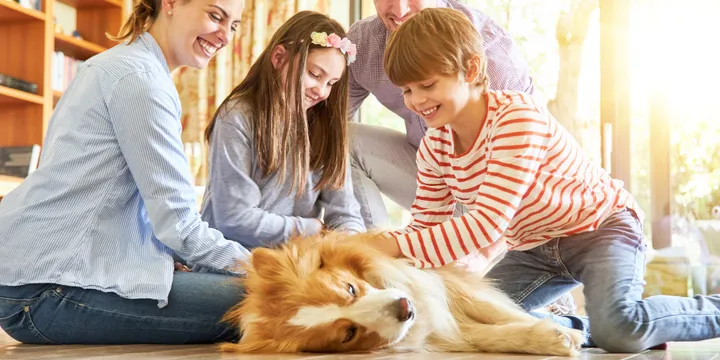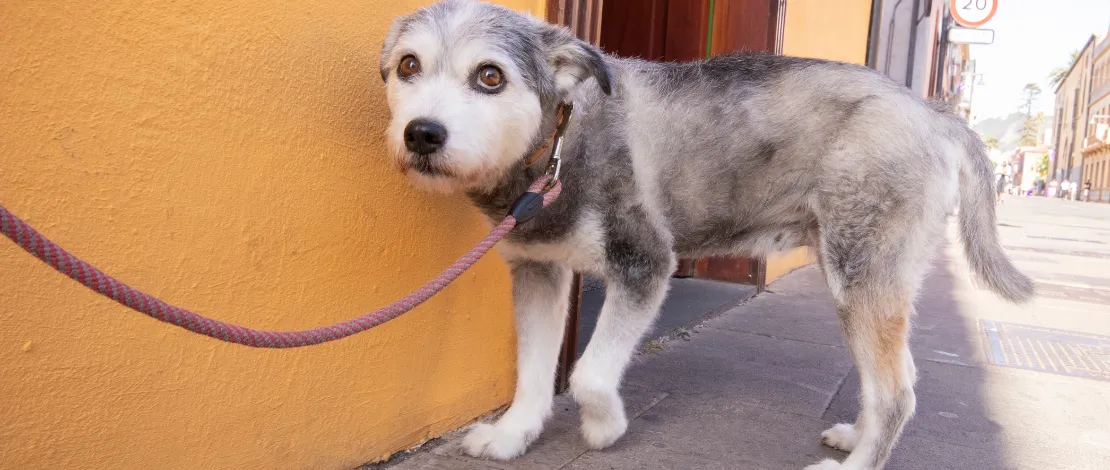
Dealing with behavioral problems in adopted dogs
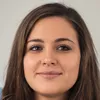
Adopting a dog can be a fun experience, but it often comes with its own challenges, especially in addressing behavioral issues stemming from past experiences.
Many adopted dogs struggle with behavior problems rooted in distrust or misunderstanding of human behavior.
Although some problems require professional intervention, many can be addressed with time, patience and understanding.
In this guide, we explore common behavioral problems in adopted dogs and provide practical strategies to manage and address them.
By understanding the underlying causes of these behaviors and applying appropriate techniques, owners can create a supportive environment in which their adopted dogs can develop.
Preventing your dog from running away
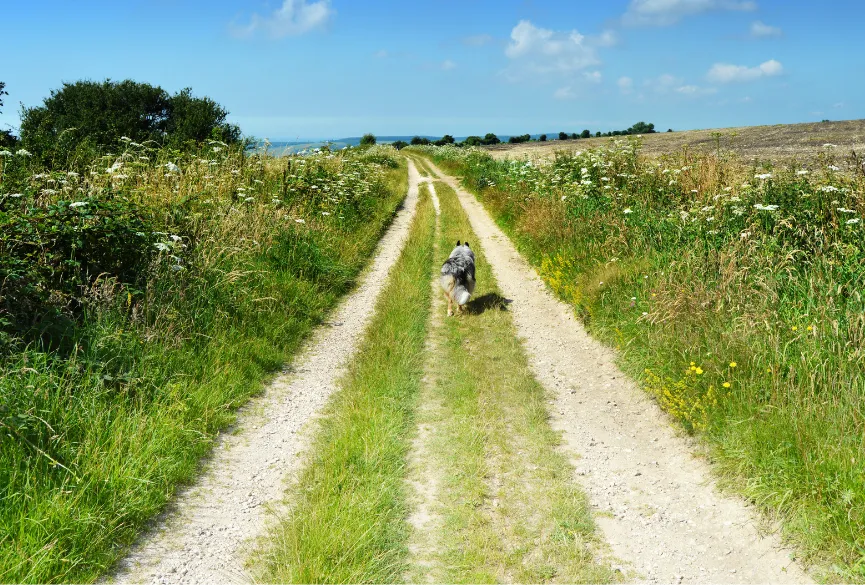
Stray tendencies are common in adopted dogs, often as a result of their natural instincts or past experiences.
Certain breeds, in particular, tend to explore, putting them at greater risk of wandering.
However, roaming involves several dangers, such as possible accidents, conflicts with other animals or even joining packs, which can lead to further complications.
To effectively address this problem, adopters must take proactive steps to prevent their dogs from escaping.
A primary measure is to implement proper fencing techniques to secure the perimeter of their property.
This means they must install fences that are not only high, but also sturdy enough to resist attempted break-ins.
It is worth noting that relying solely on electronic fencing is not always foolproof, as some dogs may find ways to bypass or ignore these boundaries.
In addition, it is critical that adopters not leave their dogs outside unsupervised, especially in areas where they can easily stray.
Ensuring adequate mental and physical stimulation through regular exercise and fun activities can alleviate the restlessness that often drives dogs to roam.
Reduce excessive barking

Excessive barking is a common behavioral problem in many adopted dogs, often resulting from various underlying causes such as neglect, fear or territorial instincts.
Addressing this problem is crucial not only for the dog's well-being, but also for maintaining harmonious relationships with neighbors and housemates.
Supervision and distraction techniques can be valuable tools to reduce excessive barking.
Focusing the dog's attention on more positive activities, such as interactive toys or training exercises, can help adopters alleviate boredom and anxiety, reducing the urge to bark incessantly.
Positive reward techniques can also play a crucial role in changing barking behavior.
Rewarding moments of calm or quiet with treats or praise reinforces the desired behavior and encourages the dog to repeat it.
In addition, creating a consistent routine and providing adequate physical and mental stimulation can help alleviate underlying stressors that contribute to excessive barking.
In extreme cases where barking persists despite intervention, adopters may need to explore other options, such as a bark collar or, as a last resort, debarking.
However, these methods should only be considered after consultation with a veterinarian or professional behaviorist to ensure they are appropriate and humane.
Teaching dogs to stop jumping up
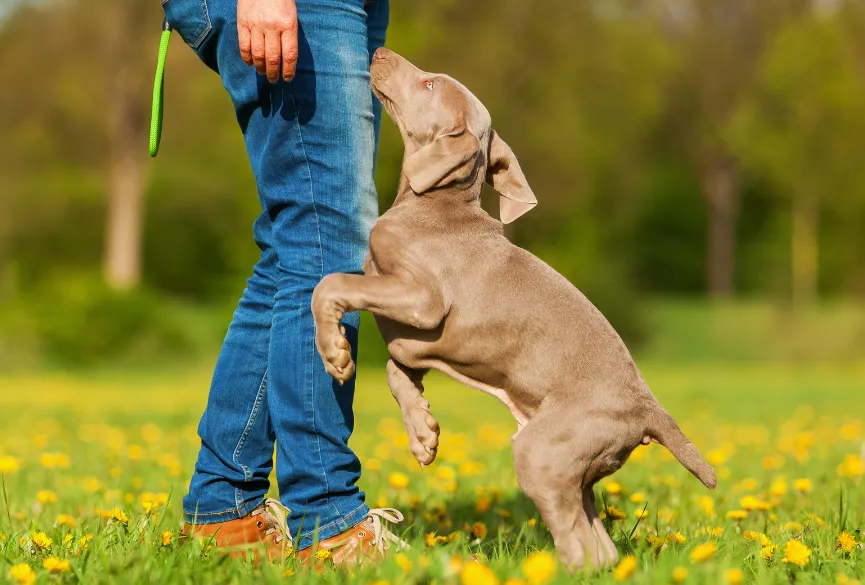
Jumping on people is a common behavior problem in many adopted dogs, often stemming from excitement, attention seeking or lack of training.
Although seemingly harmless at first glance, this behavior can become problematic, especially if the dog is large or exuberant, potentially causing injury or discomfort to both the dog and the people around them.
An effective technique to discourage jumping is to completely ignore the behavior.
If the dog jumps up, people should refrain from any form of attention, including eye contact or verbal reprimands.
This sends a clear message to the dog that jumping is not an effective way to get attention or affection.
At the same time, adopters should reinforce and reward desired behaviors, such as sitting quietly or greeting people politely with all four paws on the ground.
By consistently rewarding these behaviors with treats, praise or affection, adopters can encourage the dog to adopt more appropriate greetings and interactions.
In addition to ignoring unwanted behavior and reinforcing positive alternatives, the use of devices such as collars and leashes can provide additional control and assistance in controlling jumping behavior.
By diverting the dog's attention and directing his movements, adopters can prevent jumping behavior and encourage more controlled and respectful interactions with people.
Stopping destructive chewing

Destructive chewing is a behavioral problem common in adopted dogs, often due to a combination of factors such as boredom, anxiety or teething.
Although chewing is natural behavior for dogs, it can become destructive when directed at inappropriate objects such as furniture, shoes or household objects.
Understanding the reasons behind destructive chewing is essential to effectively addressing the behavior.
Adopters should recognize that chewing serves several purposes for dogs, such as relieving boredom, dental pain or anxiety.
By identifying the root cause of the behavior, adopters can implement strategies to redirect chewing to more appropriate outlets.
An effective technique to end destructive chewing behavior is to provide the dog with plenty of suitable chew toys and bones.
These toys should be durable, safe and attractive to the dog so that he is encouraged to redirect his chewing behavior to acceptable alternatives.
In addition, alternating toys regularly can help keep the dog busy and prevent boredom.
Supervision is another crucial aspect of controlling destructive chewing behavior. Adopters should closely monitor their dog's behavior, especially during periods of high activity or when left unsupervised.
By catching the dog chewing on inappropriate objects, adopters can interrupt the behavior and redirect the dog to more appropriate activities.
In cases where destructive chewing persists despite intervention, it may be necessary to use deterrents such as bitter-tasting sprays or motion alarms.
These deterrents can help discourage the dog from chewing on forbidden objects by making them less attractive or introducing negative associations.
Stopping the biting and pinching

Pinching and biting are behaviors often exhibited by adopted dogs, often due to various factors such as playfulness, teething or lack of socialization.
Although this behavior in puppies may seem harmless, it can escalate into more serious problems if left unaddressed, leading to injury or discomfort for both the dog and its environment.
Consistency and patience are essential when addressing biting behavior. Adopters should consistently respond to biting by withdrawing attention and reinforcing positive alternatives, such as offering a chew toy or directing the dog's attention to more appropriate activities.
It is essential to avoid rough play or encouraging behaviors that may reinforce unintentional biting.
In addition, providing adequate opportunities for socialization and teaching bite inhibition through puppy classes or obedience training can help address biting behavior in young dogs.
Teaching dogs to use their mouths gently and reinforcing calm, non-aggressive behavior can help prevent biting from escalating into more serious bite problems.
Getting your dog to stop begging
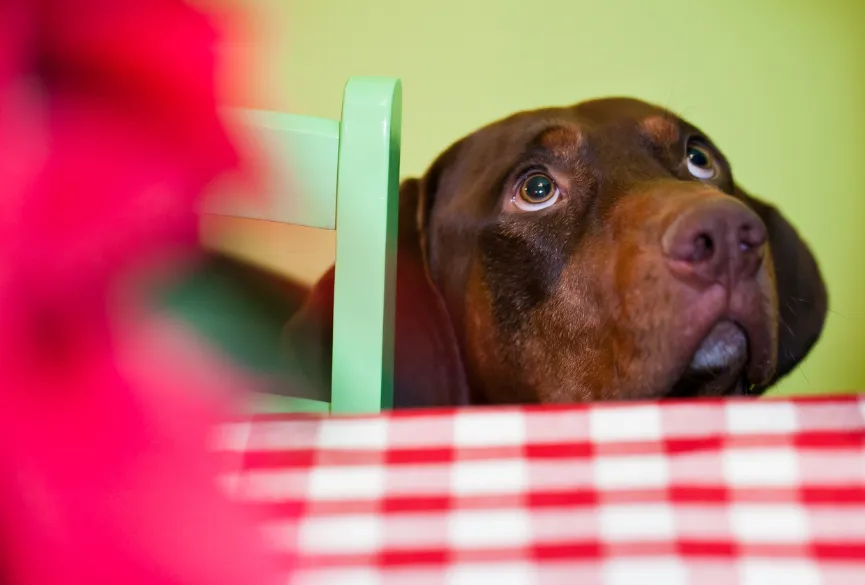
Begging for food is a behavior often observed in adopted dogs, often as a result of previous experiences of food insecurity or reinforcement of the behavior by well-meaning but uninformed owners.
Although it may seem harmless or even endearing at first glance, allowing begging behavior to persist can lead to numerous problems, including obesity, digestive problems and the disruption of eating routines.
Adopters should recognize that begging often stems from the dog's desire for food and attention, but also from learned behaviors from previous experiences.
By understanding these motivations, adopters can implement strategies to discourage begging and promote more appropriate behavior at mealtimes.
Adopters should establish clear rules and boundaries regarding meal times and eating behavior, and ensure that all members of the household consistently adhere to them.
This may include feeding the dog in a designated area away from the dinner table and not giving in to begging behavior, no matter how tempting it may be.
Using positive reinforcement techniques can also help discourage begging behavior.
Rewarding the dog for staying calm and sitting quietly during meals reinforces desired behaviors and encourages the dog to repeat them.
In addition, giving interactive toys or puzzle foods can help divert the dog's attention from begging to more mentally stimulating activities.
Correcting destructive digging
Destructive digging is a behavior problem common in adopted dogs that often stems from instincts such as hunting, territory marking or seeking cool shelter.
Although digging is a natural behavior for dogs, it can become problematic when directed at inappropriate areas such as flower beds, lawns or garden squares.
An effective technique for reclaiming the yard from a digger is to give the dog designated digging areas.
These areas should be clearly defined and filled with loose soil or sand to mimic the texture of natural digging surfaces.
Encouraging the dog to dig in these designated areas satisfies their instinctive need to dig while preserving the rest of the yard.
Adopters should closely monitor their dog's behavior outside, especially during periods of high activity or when left unsupervised.
By catching the dog digging in inappropriate areas, adopters can interrupt the behavior and direct the dog to the designated digging area.
In addition to providing designated digging areas, providing adequate mental and physical stimulation through regular exercise and interactive toys can help combat boredom and reduce the dog's desire to dig.
Involving the dog in activities such as fetch, agility training or puzzle games can help use the dog's energy in a more constructive way.
Dealing with separation anxiety
Separation anxiety is a common behavioral problem in many adopted dogs, often stemming from past experiences of abandonment, neglect or changes in living situations.
Dogs with separation anxiety may exhibit a range of distressing behaviors when left alone, including excessive barking, destructive chewing and attempts to escape.
An effective technique for dealing with separation anxiety is to gradually desensitize the dog to being alone.
This involves gradually increasing the time the dog is left alone, starting with short periods and gradually expanding over time.
During this process, it is essential to remain calm and composed when leaving and returning home, as excessive emotional signals can exacerbate the dog's anxiety.
Offering the dog comfort, such as a favorite toy or blanket, can help relieve separation anxiety and provide a sense of security during the owner's absence.
In addition, leaving attractive activities, such as puzzle toys or interactive feeders, can help distract the dog and keep him mentally stimulated during periods of loneliness.
Managing aggression
Aggression is a serious behavioral problem that some adopted dogs may exhibit, often due to fear, past mistreatment or lack of socialization.
Aggressive behavior can manifest in various forms, such as growling, barking, snarling or biting, and can pose a significant risk to both humans and other animals in the household.
A crucial technique for controlling aggression is to give the dog clear boundaries and consistent rules.
Establishing leadership and authority through positive reinforcement training techniques, such as reward-based training and obedience exercises, can help instill in the dog a sense of trust and respect and reduce the likelihood of aggressive outbursts.
Avoiding situations that provoke aggressive behavior is another essential aspect of aggression management.
Adopters should carefully monitor their dog's interactions with people and other animals and remove them from situations where they may feel threatened or overwhelmed.
Providing a safe and quiet space for the dog to retreat to when he feels stressed can also help prevent aggressive reactions.
Dealing with the abused dog

Abused dogs often have unique challenges that require special attention and understanding from adopters.
These dogs may have experienced trauma, abuse or neglect in the past, leading to various behavioral problems and emotional scars.
While adopting an abused dog can be incredibly rewarding, it also requires patience, empathy and dedication to their rehabilitation.
One of the first steps in dealing with an abused dog is to provide a safe and nurturing environment.
These dogs can be anxious or distrustful of people, so it is essential to create a calm and predictable atmosphere in which they feel safe.
Gentle encouragement, positive reinforcement and lots of affection can help rebuild their trust in people.
Building a strong bond with the abused dog is crucial to their emotional healing and rehabilitation.
Spending time together, participating in bonding activities such as play or training, and patiently gaining their trust can help strengthen the bond between the dog and their adopter.
It is important to approach interactions with sensitivity and respect for the dog's boundaries, allowing them to progress at their own pace.
About the Author

Kelly was born and raised in the city of Worcester, MA, and has always had a great love for dogs. Her parents, now retired, both worked as veterinarians when she was growing up, which sparked her interest in animal care early on.

